« Sunday Inspiration from The High Calling | Home | Interview of Chris Smith: Part 2 »
Interview of Chris Smith: Part 1
By Mark D. Roberts | Monday, July 21, 2008
Part 1 of series: Rediscovering the Books and Beauty of the Bible
Permalink for this post / Permalink for this series
Note: I have more to say about the PCUSA issues, but am away speaking at a conference right now. So I’ll put up an interesting interview I recently did with Chris Smith. I’ll get back to the PCUSA soon.
If you’re a regular reader of my blog, you know how much I value the Bible as God’s Word. Thus it won’t surprise you to know that I’m troubled by the surveys that show most Americans, even most Christians, don’t read the Bible very much. We own Bibles, sometimes many of them. But we don’t tend to open them very much.
There are some good reasons for this, apart from obvious spiritual ones like sin. Many of us don’t read the Bible because it isn’t easy to read. Many translations make the Bible seem like a distant relative who speaks English with a strong accent we don’t easily comprehend. Even the layout of the Bible makes it seem more like a rulebook and less like a story we’d actually like to read.
Thus I’m interested in efforts to help today’s people actually read and understand the Bible. Eugene Peterson’s fantastically successful The Message is the most familiar of such endeavors, but his is not the only one. Chris Seay of Ecclesia, an emergent church in Houston, is heading up a project called The Voice. This is an effort to gather scholars, writers, and poets together and produce an accurate, contemporary translation of the Bible. It’s something like The Message for the next generations.
Another effort to help folks get into Scripture comes from The International Bible Society. It’s called The Books of the Bible. It’s not a new translation of Scripture, but rather a new presentation of the biblical text. One might argue that it’s really a renewed version of the original presentation of the biblical books, before editors got to them. One of the major goals of The Books of the Bible is to convey the beauty of the biblical text, especially its narrative.
I learned about The Books of the Bible from an old friend, Chris Smith. He and I got reconnected through the Internet, renewing our college friendship. In the course of our communication, Chris shared with me what he’s been doing recently, and much of this focused on The Books of the Bible.
 I thought it would be helpful for my readers to get to know Chris, and especially to learn more about his exciting biblical project. So, beginning today, I’m doing an online interview of Chris. I expect you’ll be as fascinated as I was to learn about his Bible project. (Photo: Chris Smith)
I thought it would be helpful for my readers to get to know Chris, and especially to learn more about his exciting biblical project. So, beginning today, I’m doing an online interview of Chris. I expect you’ll be as fascinated as I was to learn about his Bible project. (Photo: Chris Smith)
Interview of Chris Smith, Part 1
Mark: Hello, Chris. Thanks so much for taking the time to do this interview. We were good friends while at Harvard. Only recently have we made contact through the Internet. So what have you been doing since 1980?
Chris: Yes, I’m afraid it has been that long. I went to Gordon-Conwell Theological Seminary and then did a Ph.D. in the ecumenical, interdisciplinary theological studies program at Boston College and Andover Newton. Before finishing seminary, I took several years off and worked first as a pastor and then as a writer-editor for the Department of Communications in Canada, where my wife Priscilla is from. After finishing my doctorate, I pastored the First Baptist Church of Williamstown, Massachusetts for nine years. Lots of students from Williams College came to the church and it was great to work with them. I’ve now just completed a six-year pastorate at the University Baptist Church of East Lansing, Michigan, where I once again enjoyed working with undergraduate, graduate and international students at Michigan State University, as well as faculty, staff and administrators.
Mark: So you’ve been a student, a writer-editor, and a pastor during the last 28 years. How did you end up getting involved in a project to reconfigure the Bible to enhance its readability?
Chris: Over the years I’ve also been writing and teaching. I’ve pursued a particular interest I have in the books of the Bible as literary creations. I guess this dates back to my years as an English major at Harvard, and even farther back to my being raised by a father who is a pastor and a mother who is a professor of literature. I’ve written in academic journals about the literary structures of biblical books, and taught adjunct and extension courses on books of the Bible. In 1999 I offered a course on “The Bible Without Chapters and Verses” at the Regent College Summer School in Vancouver. Through this course, Glenn Paauw, director of product development for the International Bible Society, found out about my work. He asked me to help him and his team with the new Scripture format they wanted to design. I and a couple of others began working with them as consultants in 2003. Today’s New International Version (TNIV), for which IBS holds the copyright, was being released in 2005. The goal was to have an edition of the TNIV in the new format ready soon after the original release of the translation. The Books of The Bible was published in the summer of 2007. (Photo: Members of the Bible design group, from left to right: Glenn Paauw, Lisa Anderson, John Dunham, Gene Rubingh, Chris Smith, Paul Berry, Jim Rottenborn. Missing from this picture: John Kohlenberger, Micah Wierenga.

Mark: So why did you want to change the way the Bible is presented? It almost sounds like you’re tampering with Scripture. You’re not messing around with God’s truth, are you?
Chris: Not at all. In fact, our starting point was the belief that the Bible is the inspired word of God and that therefore, when we open our hearts to its message, the Holy Spirit brings us to faith and transforms our lives, relationships, and communities. The problem is, people just aren’t reading the Bible. Research has shown that while millions of Bibles are distributed in America every year, relatively few of them are ever read. One of the main reasons for this is the format in which the Bible is presented. People see two columns of tiny type, sprinkled with large and small numbers, crowded between notes and references, and it looks like no book they’ve ever seen before. It’s unattractive, and they don’t want to read it.
Mark: As I get older and my vision gets worse, I’m quite aware of that “tiny type” reality. But I’d imagine that the peculiar way in which the Bible is printed can even keep younger readers with great vision from digging in to God’s truth. Yes?
Chris: Yes, indeed. The visual presentation of the biblical text discourages people from picking up a Bible in the first place. But even when people do try reading the Bible, they often don’t understand or enjoy it.
Mark: Okay, so where did we get those chapter and verse numbers, anyway? I know they weren’t in the original biblical manuscripts. When were they added?
Chris: The chapters and verses that the Bible was divided into came many centuries after its books were written. Chapters were introduced around 1200 AD, so that authors of commentaries could refer to passages more easily. Verses were added around 1550 AD, originally so that a concordance to the Greek New Testament could be prepared. In other words, chapters and verses were introduced so that reference works could be created. They were never intended to guide devotional reading or to structure public teaching.
Mark: It seems strange to think of the Bible without the chapters and verse numbers, since they’re so much a part of the Bibles we read today. They almost seem sacred, though I know they’re not. Why do these get in the way of our understanding of Scripture?
Chris: Chapters were intended to be roughly all the same length. But the natural sections of biblical books are of greatly varying lengths. Thus chapters tend to divide up a longer sections into shorter ones, or else put shorter sections together into what looks deceptively like a coherent unity. For example, in 1 Corinthians, discussions of single topics have been divided into chapters 1, 2, 3 and 4; into chapters 8, 9 and 10; and into chapters 12, 13 and 14. Meanwhile, two shorter discussions have been combined in chapters 6, 7, and 11. Another short discussion is attached to Paul’s travel plans and greetings in chapter 16. Only chapters 5 and 15 consist of a single discussion in its entirety. How can anyone understand a book that’s been divided up like this, if they try to read it chapter by chapter?
Mark: When I’ve read devotionally through the Bible, going chapter by chapter, I’ve experienced what you’re talking about. But I’ve never given this too much thought, honestly. So what’s wrong with the verse numbers?
Chris: Adding verses to chapters made things even worse. Verses create the impression that the Bible consists of series of independent statements–that it’s a collection of authoritarian rules or doctrinal propositions. This is particularly deadly for a postmodern audience, which is not really receptive to those things. But postmodern people are very receptive to art, music, poetry and the like. If we can make the original literary forms of the biblical books visible once again, postmoderns will be much better able to receive the message the Bible has been trying to convey all along through its stories, songs, letters and poems. All of us, in fact, would do better to engage the Bible as a collection of literary creations that together trace the path of God’s redemptive work.
Topics: Books and Beauty of the Bible |
One Response to “Interview of Chris Smith: Part 1”
Comments
Thanks for your willingness to make a comment. Note: I do not moderate comments before they are posted, though they are automatically screened for profanities, spam, etc., and sometimes the screening program holds comments for moderation even though they're not offensive. I encourage open dialogue and serious disagreement, and am always willing to learn from my mistakes. I will not delete comments unless they are extraordinarily rude or irrelevant to the topic at hand. You do need to login in order to make a comment, because this cuts down on spam. You are free to use a nickname if you wish. Finally, I will eventually read all comments, but I don't have the time to respond to them on a consistent basis because I've got a few other demands on my time, like my "day job," my family, sleep, etc.
You must be logged in to post a comment.





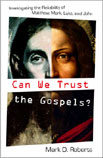
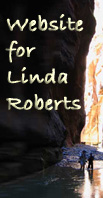

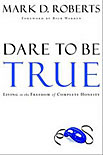
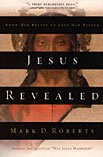
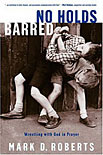
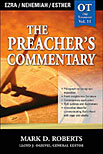
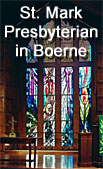

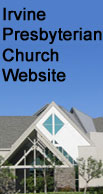
July 21st, 2008 at 6:38 pm
As a bifocaled pre-Baby Boomer, I prefer Bibles with Giant Print! I am not sure that postmodern people (whoever they are) are any more receptive to art, music, poetry and the like than any other people. I’d love to see a Bible that was accurate, readable and in Giant print. Many versions like The Message have too much interpretation in them for my taste. I also do not like any commentaries in the Bible. Too confusing and too tempting to think that the commentary is as inspired and authoratitive as the text. In looking up some Psalms and Proverbs in Hebrew I am struck at how to expressive Hebrew is and how most of our translations have watered down clear metaphors and idoms. Best wishes to Chris and company in their efforts to publish an attractive, readable Bible.